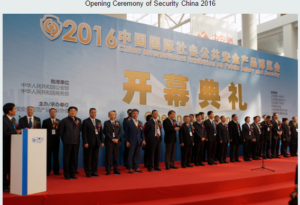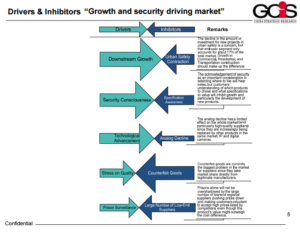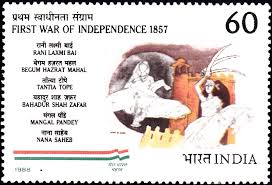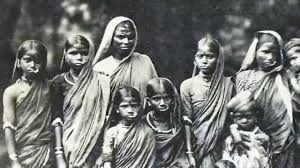BLOG 4 OF 4 ON CHINA’S NEW SURVEILLANCE STATE CLASSIFYING TIBETANS AS CRIMINAL TRIBES
GARBAGE IN, GARBAGE OUT
China is far from being a country of laws, a rules-based order, despite the insistent propaganda issued by China’s tutelary state. Many analysts argue that in reality China remains quite anarchic, a chaotic jumble of conflicting loyalties with an anything goes attitude, especially in business. While the party-state benefits enormously from proclaiming its power to regulate, the exercise of that predatory power almost always results in rent-seeking favours granted to powerful individuals employed by the party-state, extracting their price from those doing business. If anything, the recent enormous expansion of shadow banking and proliferating “wealth management products” disguises loans made by banks and institutions that shouldn’t make such loans if they adhered to rules. This demonstrates a deepening of networked capitalism based on gifts, favours and banquets.
These entrenched realities mean that the big data generated by anyone with power is likely false, deliberately misleading, designed to conceal capital flows, often through elaborate corporate structures created for concealment.
China’s big data is highly unreliable, as Wang Zhicheng, a professor specialising in credit risk at Peking University’s Guanghua School of Management, says of the social credit ranking scheme: “the project is born out of a crisis in ethics in today’s China. People don’t think that credit or integrity is important. That is what the broader state system is intended to do — raise the cost of unethical behaviour. Rating people on their big data may not turn out to be easy — China’s internet is rife with fake data, profiles and transactions. China has a long way to go before it actually assigns everyone a score. If it wants to do that, it needs to work on the accuracy of the data. At the moment it’s ‘garbage in, garbage out’.”[1]
It is this prevalence of false documentation that causes much ambivalence and anxiety within the party-state, leading to the uneasy embrace of big corporations, their data and algorithms of social credit worthiness. The hope is that good, reliable, objective data will gradually accumulate, and drive out the bad data that crony capitalism generates all the time. In reality it is more likely that, as in Gresham’s law of bad money driving out good money, the same will be true of data. There is much to be gained by predatory generators of falsified data congratulating each other on their credit worthiness, both financial and moral. The algorithms take care of the rest, since they reward you for associating with those deemed credit worthy. It all becomes self-reinforcing yet again. For Tibetans and Uighur it becomes a negative feedback loop, a downward spiral in which your reputation for untrustworthiness is exacerbated by everything you do, and everyone you associate with.
Decades ago, when almost all Chinese worked in state enterprises, each enterprise work unit maintained a thick dossier on each worker, in which the danwei work unit party cell monitored and noted the behaviours, words and attitudes of each employee. The dang’an dossier was a fearsome way of ensuring conformity, enabling total control from above, making everyone legible to the scrutiny of the all-seeing party state. In today’s capitalist China the dang’an dossier has lost its panoptic power, and until now, there has been no replacement restoring the gaze of centralised power. This is why the party-state is so keen on the social credit ranking system, and is prepared to look the other way when the algorithms just reinforce widely held prejudices about entire ethnicities, notably the Tibetans and the Uighurs. When the party-state transferred the party chief of Tibet to Xinjiang, he brought with him the surveillance state pioneered in Tibet, which is now spreading further, across China.
If the party-state is to realise its dream of restoring control over each and all citizens through big data reward and punishment systems, the deepest irony is that it can do so only by relying on the biggest corporate generators and manipulators of big data and the algorithms that assign values to each data point. There are belated signs that the party state is uneasy about this, even that it worries that the big data ecommerce corporations will be the ones in actual control.[2] In such an algorithm-driven system, is the party-state the client or the patron? This is a real question. Alibaba is so powerful, rather like Google, Facebook or Apple, that it was able to quickly squash an official Chinese regulatory attempt at holding its business practices to account. Alibaba is protected by a party-state that works hard to prevent Chinese citizens from accessing Apple, Amazon, Facebook or Google.
Nonetheless, the party state badly needs to feel it is in control, and seems willing to accept a system in which there are victims, even entire populations classified as untrustworthy, dishonest, insincere and warranting punishment.
Not only does the party-state want to monitor and correct the behaviour of citizens and corporations, it is also wrestling with the extraordinary complexity of governing a country of 1300 million humans, at a time when economic growth is inevitably slowing, and myriad social problems are emerging. The response of the party-state to complexity is not to devolve power to more local levels, where officials might have some actual experience of circumstances on the ground. Just the opposite, the response has been to centralise, which is what top-level design and meta-synthetic engineering are all about.
RULE BY LAW OR RULE BY ONE ALL-POWERFUL CORE LEADER?
Since Xi Jinping took over in 2012, he has centralised power to an extraordinary extent, a concentration noted by all observers. Journalists tend to assume this has been achieved by force of personality, as if personal charisma drives historic shifts. However, observers familiar with systems theory and top-down design identify the appeal of centralisation of power, a decisive move away from the CCP’s recent decades of collective decision-making by consensus, as a way of tackling simultaneously all of China’s multiple problems, complexities and contradictions. Not only is Tibet included in this totalising design, it has a specific role to play for a tutelary state that needs a model of exemplary dishonesty/insincerity to point to, as an example to all.
Korean security and strategic analyst Sangkuk Lee alerts us to the deeper reasons China’s deep party-state has turned to top-level design, including the social credit ratings system. Based on close reading of many Chinese sources, Lee reminds us that: “CCP official theory periodical, ‘Seeking Truth’ (Qiu Shi, 求是) presented a drawback of China’s decentralized power system by citing a Chinese political scientist in August 2012. Remarkably, this journal directly criticized the system of combining ‘collective leadership’ and ‘division of work with individual policy responsibility’ among the individual members of PBSC [Politburo Standing Committee]. The journal argued that the decentralized power system had led to the ineffectiveness of government system, the corruption of government officials, their political irresponsibility, and damage to national interest.”[3]
Xi Jinping did not accrete all power by Game of Thrones ruthlessness, or by charisma, or in a crisis. Armed with the seductive promise of systems theory and top-level design, he persuaded other central leaders that all aspects of development planning require an integrated approach embracing the economy, culture, politics and society. Lee: “In order to centralize political power and to eventually exert his influence over widespread policy areas, Xi Jinping, the Party’s General Secretary, actively publicized his new approach and reform methodologies, including ‘systemic thinking’ and ‘top-down design’. Xi’s methodology for China’s deepening reform is based on a complex systems theory, especially the open complex giant system (OCGS). The OCGS theory considers a social system as a type of OCGS, ‘where the quantity of subsystems is extremely large, the subsystems have a hierarchical structure and complex interrelations within them; finally their energy, material and information exchange are open to the outside, self-adaptive and evolutionary’. Furthermore, this systems theory regards society as an organic whole constructed by interconnections, interactions, and mutual effects between economic institutions, socio-political institutions, and ideological and cultural systems. Systems theorists perceive that the traditional reductionism of the exact sciences cannot provide an effective methodology to solve social OCGS problems effectively. Thus, the proponents of OCGS propose employing the methodology of meta-synthesis ( 综合集成法) and establishing the Department of Integrative System Design (总体设计部, DISD) to be responsible for the comprehensive analysis, design, and planning in considering an entire complex system rather than its specific subsystem.”
The promise of top-level design systems is that, by concentrating all design power in the hands of one man, all problems can be dealt with, all at once, including the intractable problem of the Tibetans, who refuse to be cooked into assimilation, remaining stubbornly raw. To Tibetans, used to analysing the delusional thinking that arises from excessive conceptualisation, this concentration of power only exaggerates the great distance between daily realities experienced on the streets in Tibet, from the meta-syntheses within the walls of the party-state’s Zhongnanhai palace. The more top-level layers are reinforced, the greater the likelihood that ground truth will disappear from view, and systems theory will take over.
But for Xi Jinping, systems theory seems to deal with everything. Sangkuk Lee again: “The kernel of top-down design is setting strategic goals on whole (整体性), comprehensive (全面性), long-term (长远性), and overall (全局性) ways. Notably, the top-down design cannot do without an architect, like Deng Xiaoping, who is officially recognized as ‘the chief architect of China’s economic reforms and socialist modernization’. As People’s Daily suggests, the concept of top-down design intrinsically takes a positive view of the emergence of a powerful leader. After being elected as the helmsman of the CCP in November 2012, Xi Jinping assertively prioritized applying his new approaches and methods, developed from systems theory, to deal with a whole slate of reforms beyond just economic reform. According to the Party Central Document Research Bureau, the first and best examples of Xi’s reform approach and methodology were his remarks during a tour in Guangdong province in December 2012. During this tour, Xi Jinping warned that China had entered a period of overcoming major difficulties, a deep-water zone (深水区) in its drive to break through barriers to reform presented by ideological differences and vested interests. Xi asked the Party and the people to adhere to the path of reform and opening up and to put greater focus on pursuing reform in a more systematic (系统性), whole (整体性) and coordinated way (协调性). Xi added that deepening reform and opening up requires firm confidence, consensus, top-down design (顶层设计), an overall plan (总体规划), and coordinated steps (协调推进), outlining comprehensively deepening reforms (全面深化改革) involving the organic combination of political, economic, social, cultural, and ecological reforms as a type of complex systems engineering.”


 This also explains why Xi Jinping took over personal control of economy and society, but also of security and stability, by imposing a new top-level National Security Commission, with himself in charge, empowered to intervene in all aspects of human life, in the name of national security. It is this conflation of development and security, of economy and security, indeed the securitisation of all aspects of life, that reinforces the ingrained habit of party-state leaders to see Tibet first and foremost as a security problem. Systems theory has the answer to all problems, and in its Chinese version, even includes “contradiction theory”, which explains away Tibetan unhappiness and protests as just the teething pains of the contradictions inherent in modernising a traditionalist, religious society in which the clerics cling to their historic role. According to “contradiction theory”, as Tibet gets richer, with more consumption options, the power of the clerisy will fade, and the contradictions will be resolved by a new synthesis, as Tibet urbanises.
This also explains why Xi Jinping took over personal control of economy and society, but also of security and stability, by imposing a new top-level National Security Commission, with himself in charge, empowered to intervene in all aspects of human life, in the name of national security. It is this conflation of development and security, of economy and security, indeed the securitisation of all aspects of life, that reinforces the ingrained habit of party-state leaders to see Tibet first and foremost as a security problem. Systems theory has the answer to all problems, and in its Chinese version, even includes “contradiction theory”, which explains away Tibetan unhappiness and protests as just the teething pains of the contradictions inherent in modernising a traditionalist, religious society in which the clerics cling to their historic role. According to “contradiction theory”, as Tibet gets richer, with more consumption options, the power of the clerisy will fade, and the contradictions will be resolved by a new synthesis, as Tibet urbanises.
To quote Sangkuk Lee again: “‘Modern Marxist’ theories regarding systemic thinking (系统思维), strategic thinking (战略思维), creative thinking (创新思维), and contradiction theory (矛盾论), which are based on the various remarks and speeches of Xi Jinping as well as the words of other prominent Marxist and Chinese leaders, including Karl Marx, Vladimir Lenin, Mao Zedong, and Deng Xiaoping. The efforts of Xi Jinping himself eventually led to a consensus of China’s political elites not only to apply the top-down design and overall plan, but also to establish coordination organizations to do so at the central party level. Specifically, the third plenary session of the 18th Party Central Committee decided that the Party would establish the Central Leading Group for Comprehensively Deepening Reforms (CDR) and the National Security Commission in November 2013. When expounding this Central Party’s decision in explanatory notes, Xi Jinping stressed that ‘comprehensively deepening reform is a complicated systems engineering project, which requires more than one or several departments to carry out. Therefore, leadership at a higher level should be established for this purpose’. This concept of overall national security outlook originated from systems theory in terms of its emphasis on not only the nation’s comprehensiveness of security (全面 性), wholeness (整体性), and systematicity (系统性). Moreover, the concept has been influenced by systemic security theory, which was developed by Chinese scholars, as seen from Xi Jinping’s prioritizing the building of a national security system for covering the spheres of politics, territory, military, economy, culture, society, science and technology, information, ecology, nuclear, and natural resources.”
This centralisation of power, and framing of all aspects of Tibet as security problem, to be dealt with by low social credit rankings, and punishment, is perhaps the ultimate reification of Tibet in the remote gaze of China’s party-state. It is a hardening of the heart, a failure to recognise the deep unhappiness of the Tibetans for what it is. Top-level design only adds yet another superordinate level to an already complex hierarchy of concepts, preconceptions, judgements, labels that box the Tibetans into deviant status, making it ever harder for central leaders, with their Confucian dream of perfect control, to actually see Tibetans as they are. In Tibetan, this conceptual proliferation is kündzop, usually translated as relative truth. However, as Khenpo Karthar Rinpoche reminds us, kündzop “literally means ‘fake truth.’ Relative truth is fake truth because, when it is viewed by an undeluded cognition, it is seen to be unreal, to not truly exist. It is a process of bewilderment and bewildered appearances, and it is continuous in the sense that it is beginningless and has never stopped. It is constantly gaining momentum, and its power is constantly increasing, causing your bewilderment to grow over time. Through bewilderment you experience relative truth, or fake reality, as real. What is this like? It is like being in the audience of a skilled illusionist. Any form of bewilderment, any form of hallucination, can occur just as an illusionist can cause you to see just about anything.”[4]
HISTORY REPEATS
The current moment has striking parallels with the moment, in 1871, when the British Raj in India legislated to declare specific minority nationalities to be inherently criminal. If today’s China can be modelled as an Open Complex Giant System, so too, if we wind back 160 years, the British found India bewilderingly complex. The British thought they knew their Indians, and were shocked when revolts occurred in 1857, in what the British even now call a mutiny, and India calls its first war of independence.
This account of what led to the 1871 Criminal Tribes Act draws on analysis of historians such as Mark Brown, in which India after 1857 and China after the Tibetan uprising of 2008 appear remarkably similar; likewise Britain’s hardening of the categories in response to India’s first war of independence in 1857, so readily juxtaposable with China’s hardening of contempt for Tibetans and Uighurs for their refusal to be cooked into assimilated Chinese citizens. Britain justified its categorisation of entire communities as inherently criminal by relying on new sciences of anthropometry and caste classification. China now justifies its turn to regimes of constant punishment of the untrustworthy and dishonest by turning to scientific algorithms measuring big data on social credit worthiness.
Evidence of this repeat of history is worth quoting at length: “It was after the events of 1857 that British imperial authority was asserted with renewed vigour and that colonial development turned more explicitly towards the establishment of a modern productive economy. In this context, colonial administration was itself re-visioned and science recruited to the task of creating a rational scientific-administrative state. The meshing of racially based frameworks of social classification with administrative/mercantilist with stable and productive labour produced, almost as an aside, new conceptions of native criminality, deviance and marginality. Ideas about native criminality emerged as part of a much larger exercise to classify and stratify Indian society, and the native criminal held a key role within that broader strategy. Far from being a marginal figure, the category of ‘native criminal’ seemed to function instead as an archetype, anchoring the lower end of India’s social hierarchy. The production of this dichotomy, contrasting the manly warrior of the Punjab with the inadequate and morally debased criminal, produced a set of parameters within which a whole range of intermediate social classifications could then be located.”
Before the 1860s, classifying Indians as manly warriors or debased criminals was the work of the Thagi (origin of the word thug) and Dacaity Department: “The further that officers of the Thagi and Dakaiti Department penetrated the fabric of native society the more disturbing the picture appeared. Not only was crime widespread and connected into the upper echelons of native social and political orders, but it could also be of the most fearful character. Race theory provided the key to explaining and understanding how such practices could occur in a society that, elsewhere, was characterized by great cultural sophistication. In response to the threat of moral relativism implied by Darwinian evolutionary theory, ethnologists had patched together a reprise, namely, the idea of evolutionary moral progress. Mirroring the precepts of race theory, moral evolutionists claimed that higher and lower moral states could be observed both between and within racial groups. Progress in civilisation would thus be reflected in an aggregate progress in moral as well as physical development. It was because of these hierarchies of moral evolution that the British were able to equate with their own lower classes and criminals with the savages to be found abroad.”
TOP-LEVEL DESIGN IN THE 1860S
“The categories of race and caste were remarkably complementary due to their generality and porosity. Given the right conditions, each term could effortlessly absorb the assumptions or implied characteristics of the other. The taxonomic schemes of race theory and caste association therefore provided colonial administrators and their administrator/scholar counter-parts with a seemingly endless array of negative racial and social markers that could be deployed against suspect groups or communities. The scientific task of classifying criminals into taxonomic groups that began in the 1860s provided immense scope for the play of the colonial imagination.”
“A major determinant of whether a criminal was thought to be of the ordinary variety or not was his level of attachment to land or to a settled community. If such attachment could be shown, then crimes could be understood in much the same way as they were in England. On the other hand, evidence of a nomadic or wandering existence would beg the question of how else, other than by crime, either the individual or the wandering community could regularly sustain itself. This sort of distinction was drawn throughout the British territories.”
“As British authority increasingly reinforced the ideal of a ‘modern’ and productive India, and as technological advances in the form of railways, irrigation schemes and the like displaced a range of traditional service roles, nomadism itself was gently but surely recoded as a marker of both economic marginality and social threat. Over time the label of Criminal tribe came to be applied increasingly on grounds that weighed vagrancy –and the threats this posed both to the new economic order of settled agricultural commodity production and to traditional policing techniques- as much as any verifiable record of criminal conduct.”
“The ascription of gypsy racial identity removed the need for colonial administrators to delve into these groups’ history. In this way the wandering tribes came to be both with and without history. On the one hand, they belonged to an ancient racial line; on the other, the presumed permanence of Indian social relations obviated the need to know what function they had played in pre-colonial native society and, indeed, how British incursions into native politics and society might have affected their means of livelihood. Knowledge of their gypsy racial stock was principally of value for the assistance it might provide administrators now developing anthropometric systems for identification of hereditary criminals and working on strategies for the suppression of their criminal activity. In discussions of these suppression activities, debate turned upon whether hereditary criminal behaviour was best met with repression or with attempts at reclamation.”
“While the penal code provided an exclusively penal response to habitual offending, the Criminal tribes Act provided measures for the registration, surveillance and reformation of difficult groups: none of these measures was classically penal in nature. The internment of notified criminal tribes was surely a measure of incapacitation, but the goal of such colonies was promotion of alternative economic skills –notably settled agriculture- and in many cases ‘reform’ was rewarded with the allocation of land and release from the grip of colonial surveillance and control.”[5]
“By the time notions of habituation to crime or hereditary criminality emerged in British domestic discourse in the 1860s more than half a century of historical, ethnological and biological enquiry into the status and ordering of humankind in India had firmly located and described the hereditary criminal type. Ethnological investigations of native criminality were central to understanding the phenomenon of thuggee and were later recruited to support policies directed towards the so-called ‘ criminal tribes ’ of northern India. The idea of evolution itself provided the heuristic key that race theory had to that point been lacking. Suddenly the practical significance of race became apparent. If humankind had evolved in a process of progressively more successful adaptations, race could explain the progress of civilization and, thus, of forms of social organization, political consciousness and government. In 1856 the Punjab Government issued an executive order providing for the internment of three ‘criminal ’ tribes, the Sansis, Harnis and Baurias. Ostensibly the internment settlements aimed to restrict these tribes’ movement, provide for more constant surveillance of their activities and wean them from criminal to agricultural activity. As a number of writers noted at the time, however, these communities were strongly averse to agriculture and to sedentary life generally, meaning that many settlements failed to provide sufficient food for their own needs and came to depend upon food aid. The sort of data recruited in 1870 to support the criminalization of entire communities marks a period of transformation in the bureaucratic use of ethnographic data on native crime and criminals. At this stage, data both gathered in support of the bill and presented in responses made by governments and interested parties, such as police inspectors general, magistrates or justices, tended to a kind of narrative historicization of criminal conduct and recounting of notorious crimes. By the late 1860s, with the development of more elaborate ‘ scientific’ taxonomies of criminal behaviour, the presumption that Indian society harboured hereditary criminal communities was widespread. Administrative rules were thus produced that covered procedures like the roll call of registered tribes, the system of passports, the engagement of village headmen in notifying police of absences and, importantly, the strategies of surveillance that would be maintained over the tribes. V. T. P. Vivian drew this knowledge together in the Punjab in A Handbook of the Criminal Tribes of the Punjab. This handbook, and those like it, produced in other jurisdictions, was a compilation of the extensive research undertaken by police, district officers and ethnologists into criminal tribes’ culture and social habits. Vivian’s aim, as Assistant Superintendent of Police in the Punjab, was to produce ‘an elementary hand-book for the use of district officers, whereby they may gain a passing knowledge of the castes which are held responsible for the greater part of organized crime in the Punjab and elsewhere’. In each case, the focus of the text is upon how these socio-cultural data would allow police and district officers more effectively to identify, interrogate, monitor or pursue members of the Bawaria tribe. Vivian advised the district officer or policeman that groups of Bawarias on criminal expeditions had also been found to communicate through marks and signs left upon roads and upon the walls of their camping places. The ability to interpret these cryptograms would surely aid the pursuit of a gang or potentially head off a raid. The signs ranged from directional markers to more complex diagrams communicating where a gang was camped, whether it had split into separate parties, the value of property in its possession, whether or not such property was secured, and so on. The question of exactly what sorts of intervention might be most successful in achieving transformations in conduct was pointed to, but the issue of reform constituted a rather larger policy issue and was clearly beyond the remit of this sort of manual. In fact, a committee established to consider just this issue began meeting shortly after the publication of the Handbook, in November 1913. Its findings, published in 1914 as a Report on Questions Relating to the Administration of Criminal and Wandering Tribes in the Punjab, presented for government consideration a series of proposals for resolving the problem posed by these criminal communities. A brand of socio-cultural ethnology emerged as the dominant form of bureaucratic knowledge concerning native criminality. Indeed, as Vivian describes at a number of points in the Punjab Handbook, administrators perceived ethnological profiles of tribes to be a far more reliable tool than simple criminal statistics, for the latter were felt to be subject to many errors produced, in the main, by the very characteristics of tribes – mobility, disguise, evasion – that the ethnologies sought to describe.” [6]
For those Indian communities designated as criminal tribes in 1871, the consequences were and still are devastating. The British Raj removed, displaced, interned, gaoled, killed and sequestered huge numbers of people. Then newly independent India did away with the Criminal Tribes Act, yet treatment of these outcasts remains highly prejudicial and discriminatory. Independent India also declared those decreed unclean and beneath the acceptable castes to be children of God –harijans– but in practice, the discrimination against them persists even now. Officially, the Criminal Tribes became the De-notified Tribes, but this re-designation did little to undo their stigmatisation. As recently as 2009, two respected social scientists, one the head of the Department of Tribal Studies at the National Institute of Research and Social Action, could publish a booklength analysis of “Tribes under Stigma”, noting: “They are very backward in matters such as development. Many of them live in tents, on vacant lands on the out-skirts of villages or in the flimsiest of shanties in urban areas. Basic amenities are unknown to them. They lack permanent address. They don’t have ration cards. They have no official documents. They face many difficulties to obtain caste certificates. Their names are not included in the voters list. They are officially non-existing. They are not eligible for any government benefits. Traditionally, these tribes were pastoralists, hunter-gatherers and nomads… They are treated as the real causes of threat to the neighbouring places. These yerukalas are commonly stigmatised as dacoits, burglars, pilferers, thieves and railway-wagon breakers………. These tribes lead a vagrant life in jungles, hills and deserts with no fixed abodes. They wander about with their bag and baggage and pitch their tents on the out-skirts of a village or a city or in some secluded and out-of-the-way place. Gradually with the advance of civilisation in the country the struggle for existence became more and more acute for these nomadic people and they had to face increasing hardships in their ‘criminal’ career.”[7]
[1] Clover, When big data meets big brother
[2] Lucy Hornby, Beijing delays licensing tech groups to give consumers credit scores: Pilot schemes basing ratings on online activity provoke fear of conflicts of interest, FT 4 July 2017 https://www.ft.com/content/f772a9ce-60c4-11e7-91a7-502f7ee26895
[3] Sangkuk Lee (2017): An Institutional Analysis of Xi Jinping’s Centralization of Power, Journal of Contemporary China.
[4] Khenpo Karthar Rinpoche, Bardo: Interval of possibility, KTD Publications, 2007, 12-13
[5] Mark Brown, Race, science and the construction of native criminality in colonial India, Theoretical Criminology, vol 5 #3, 2001, 345-368
[6] Mark Brown, Ethnology and colonial administration in nineteenth-century British India: the question of native crime and criminality, British Journal for the History of Science, 36(2) : 201–219, June 2003.
[7] Malli Gandhi and Vakulabharanam Lalitha, Tribes under Stigma: Problem of identity, Serials Publications, New Delhi, 2009, 6, 25-27













